B&B Cone (1936)
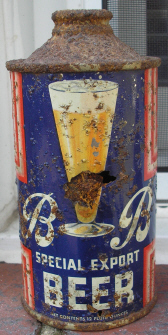 |
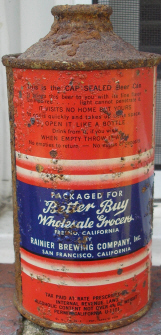 |
I like the design on this cone, so I kept it even though I don't really collect west coast conetops. It's a store (or "house") brand, made for Better Buy Wholesale Grocers in the mid and late 1930s.
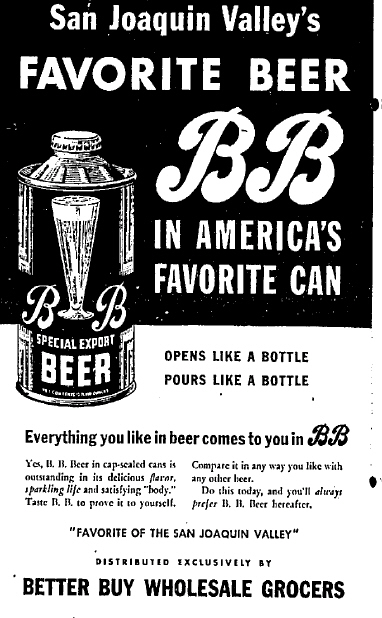 |
1937 B B Beer advertisement.
Rainier Brewing of San Francisco
There were two breweries making Rainier Beer from the end of Prohibition in the 1930s until this San Francisco brewery closed in the early 1950s. The two breweries were connected by a common history dating to the 1910s and Prohibition in the Pacific Northwest.
Rainier's story starts in Seattle when the Hemrich family started the Bay View Brewery in 1883. The brewery's main product was called Rainier Beer. The family was very successful and soon bought other Seattle breweries. The combined firm was named the Seattle Brewing and Malting Company in 1892. By 1914 the "House of Hemrich" was one of the largest breweries in the US and the largest industrial company in Washington State.
In 1916, however, Washington went completely dry, voting for Prohibition in a state-wide referendum. The Hemrich brewing business moved south to San Francisco where the new company was named the Rainier Brewing Company. The relocated brewery only lasted until 1920, however, when California went dry along with the entire US.
In 1933, when Prohibition was repealed, both the Seattle and San Francisco breweries reopened. San Francisco remained a Hemrich family business while the Sick family took over Century Brewing in Seattle. In 1935 the two companies formed a joint business relationship. They both would produce Rainier Beer, but divided the Pacific Coast into territories. The Seattle firm sold their product in Washington, Oregon and Alaska. The San Francisco company would sell in California. (I do not yet know who had the rights to Hawaii or the other western states but I believe the Seattle firm had the rights to the Idaho market.) Both breweries used the same labels for their Rainier beer so the cans looked alike.
This arrangement continued until 1953. That year the San Francisco brewery was sold to the Hamms Brewery of Minnesota. The Seattle firm bought the naming rights to Rainier that were owned by Rainier Brewing and the rights to the territories where the San Francisco brewery sold their products. Hamms changed the brewery's production to Hamms Beer. The San Francisco brewery closed in 1975.
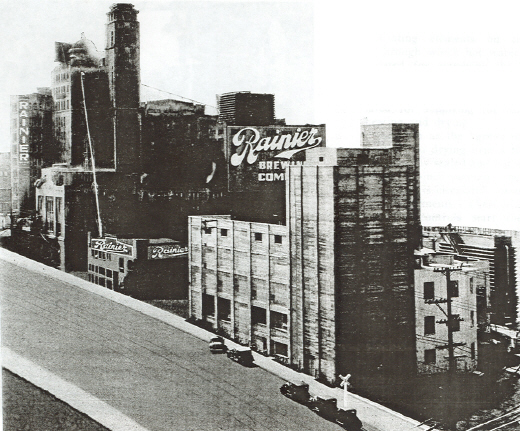 |
Rainier Brewing, 1930s.
Postscript
I was reading the website "Record Robot" and found that after the San Francisco/Hamm's brewery was abandoned squatters lived there, and in the late 1970s and early 80s it was a punk music spot called the Vats. Among the groups to come out of the Vat was "Condemned to Death." This album, "Diary of a Love Monster" featured songs such as "Stoned to Death," Night of the Succubus," and "Deformed Blood Ghouls." Pick up a copy on eBay, plop it onto your stereo, crack open a beer wonder just what the old Rainier Brewery crew would have made of it.
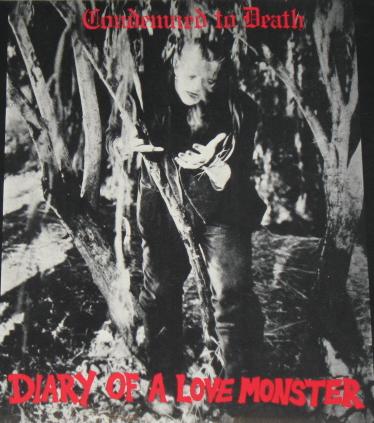 |
Album cover, Condemned To Death, "Diary of a Love Monster"
(I found the image elsewhere, but for more info go visit Record Robot!)
Sources Used
"Big Brewery Merger on Pacific Coast" Brewers Journal (May 1935)
BB Beer advertisements. Fresno Bee (1937)
Clark, Norman. The Dry Years: Prohibition and Social Change in Washington (1965, 1988)
Meier, Gary and Gloria. Brewed in the Pacific Northwest (1991)
"News and Views of the Breweries" Modern Brewery Age (July 1953)
"Rainier Joins Century in $2,000,000 Brewery Merger" Modern Brewery (May 1935)
Van Wieren, Dale P. American Breweries II (West Point, PA.: East Coast Breweriana Association, 1995)
